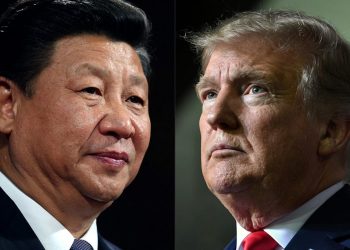As a mother of two, Paige Harris has noticed a change in the way she shops for her family.
“Items that I buy regularly see regular price increases,” she said. “From hair dye to baby formula, our grocery list has been reduced while our budget has had to increase. Meats like steak are off-limits for our household.”
Harris, 38, lives and works as a teacher’s aide in Stella, North Carolina, and is one of nearly 40 people who spoke to the Guardian about how they have coped with the cost of goods in the six months since Donald Trump announced his drastic tariffs.
On Thursday, an S&P Global study found that companies are expected to pay at least $1.2 billion more in expenses in 2025 than expected. But according to researchers, the burden is now shifting to American consumers. They calculated that two-thirds of the “spending shock,” or more than $900 billion, will be absorbed by Americans. Last month, the Yale Budget Lab estimated that the tariffs would cost households nearly $2,400 more per year.
Harris says the tariffs’ impact on her daily life contradicts the Trump administration’s promises to “lower prices and make life affordable for everyone.” She said: “You see prices skyrocketing. It has become very clear that this administration did not and does not care about the daily lives of Americans.”
Several Americans told the Guardian that their weekly budgets had been radically changed with the introduction of Trump’s tariffs.
“The prices are way too high. I mostly shop at Costco and shop as little else as possible,” said Jean Meadows, a 74-year-old retiree who lives in Huntsville, Alabama. “I can’t imagine the stores haven’t noticed the change. I think people are really scared of what’s coming.”
This sense of foreboding is reflected in a recent poll, conducted exclusively for the Guardian, in which respondents identified tariffs as the second biggest threat to the economy.
“The price of the bread I buy has doubled in a year. We live on a fixed income that doesn’t keep up with inflation,” said Myron Peeler, also retired and the sole caregiver for his wife, who suffers from debilitating arthritis. The only saving grace, he says, is that his house and car are paid off.
Trump is showing few signs of abandoning his tariff policy — a move the White House says will reinvigorate U.S. manufacturing and boost revenues for trading partners.
More recently, the president reignited a trade war with China by threatening to impose 100% tariffs on Beijing as early as November. This came after China moved to restrict exports of rare earth minerals needed for several everyday items, from electric vehicle batteries to hospital equipment, a move Trump called “very hostile.” In an interview with Fox News, the president admitted that the proposed tariff hike was “not sustainable” but said he had little choice: “They forced me to do this.”
Currently, the average U.S. tariff on Chinese exports hovers around 58%, according to the Peterson Institute for Economics. It’s a levy that already weighs heavily on Americans like Michele, from northeastern Pennsylvania.
“We need to buy new tires for a car, and we can’t, because affordable tires are no longer in stock and we can’t afford to pay $250 a tire,” she said.
Several people echoed Michele’s sentiments regarding availability, describing the situation as “empty shelves, higher prices.” Natalie, who lives in New Hampshire, said she hasn’t seen some pantry staples “in months.” She said: “Store shelves have become increasingly empty… instead of multiple choices, there are maybe only one or two, and the big brands are being replaced by store brands. »
At 55, Natalie is semi-retired but is due to start working part-time in a supermarket and has noticed price increases on almost everything she buys regularly. “Any brand of cat food has gone up 25% to double the price. A wet food that my cats like has gone from $1.79 to $2.49 per can,” she said.
The new normal that many Americans are preparing for, or already feeling, is about more than just the cost of groceries; for those like Minnie, a food writer in Portland, Oregon, it’s a lifestyle change.
“I’m not buying non-essentials. No fall shopping for a new sweater or new jeans. And we’ll be doing all our own Christmas presents this year,” Minnie, 55, said. “We used to dine out once a week. Now we don’t eat out anymore. Even fast casual is incredibly expensive. Everything costs double what it used to cost and we’re really scared of what’s next, financially speaking.”
With the US inflation rate hovering around 2.9% – a substantial decline from Covid-era peaks – the tariffs have done little to soften the impact on Americans’ wallets. Richard Ulmer, 81, who has lived in Florida for 35 years, said this year has been “the worst from a financial standpoint,” adding that “everything” from his groceries to the electric bill has become more expensive.
For Cassie, a 25-year-old consultant based in Siler City, North Carolina, costs escalated quickly compared to “gradual price increases” during the first two years of the pandemic. Cassie has a strict budget of $65 a week for groceries, but since Trump first announced his rates, she’s been excluded from her normal routine, which included most of her weekly Walmart runs.
“Now I have to visit at least four different stores in the area and in other cities, often traveling longer distances to find the best prices,” she said. “During the summer months and the announcement of tariffs between Mexico and Latin America, Walmart and other stores in the area ran out of bananas for about two weeks. No one could get bananas in my area.”









